Army's Muddy Laboratory Sparkles
On-the-move testbed drives speedy battlefield response.
At first glance, Hummer sport utility vehicles, more associated with yuppie urban commandos, would seem unrelated to the U.S. Army’s radical force transformation plans. Nevertheless, in a highly innovative approach, the service bought commercial Hummers, cut them apart, stretched their length, and installed leading-edge communications and information technology systems.
The stretched sport utility vehicles, which now serve for on-the-move command and control (C2), are part of a new testbed that symbolizes the Army’s efforts to modernize for tomorrow’s battlefields. These testbed scenarios are in many ways like a march of the robots, involving multispectral sensors and lethal weapons on unmanned ground and airborne vehicles.
The Army is getting a rare glimpse of its future, and it likes what it sees. Along with mobile C2, testbed system integration includes unattended Silent Warrior ground-based sensors, which awaken from sleep at the hint of a threat to employ seismic, acoustic, electro-optic and infrared detectors using new battery technology. Airborne synthetic aperture, moving target indicator and foliage penetration radar add other dimensions. Diverse technologies include tactical and small unmanned aerial vehicles (UAVs), a cost-effective targeting system, a future scout cavalry system, simulated loitering and precision attack munitions, a responsive accurate mission module and Javelin antitank missiles fired from small unmanned ground vehicles.
Quicklook, an artillery shell that becomes a tiny UAV with an electro-optic payload, provides the testbed commander with instant observation of surrounding terrain and enemy forces. Quicklook deploys inflatable wings after being fired from either a 120-millimeter or 155-millimeter howitzer. A remotely automated munitions system, which features an autonomously loading and self-firing 120-millimeter mortar, also is in use with testbed vignettes.
A series of 22 realistic vignettes based on real-world challenges in a tactical setting is helping showcase Army command, control and communications (C3); sensors; and fusion capabilities. These scenarios involve mission planning, maneuver and fire support from mobile C2 Hummers within remote areas of Fort Dix, New Jersey.
Vignettes generally are grouped into categories of C2; intelligence, surveillance and reconnaissance (ISR); and communications. Each scenario is structured to demonstrate a developing situation, rapid transition to the fidelity necessary to initiate combat on friendly force terms, engagement at tactical standoff ranges and maneuvering to positions of advantage prior to contact with a hostile force.
The C2 scenarios effectively provide the commander with an on-the-move ability to re-plan, re-task, rehearse, monitor and execute collaboratively among multiple echelons. ISR vignettes demonstrate accurate and timely detection and identification of targets and friendly force tracking over specified areas at standoff ranges. The communications scenarios demonstrate that a heterogeneous, dynamic, extended-range, redundant, multitier network can reliably provide on-the-move data delivery.
Vignettes solidly demonstrate a commander’s ability to view and respond to a three-dimensional battlespace, and they help provide a foundation for the Army’s future combat system (FCS). This system is the fundamental building block in the service’s Objective Force transformation. The FCS-equipped force must provide integrated mobile networked command, control, communications, computers, intelligence, reconnaissance and surveillance (C4ISR).
The Army’s formation of a special project office at the Communications-Electronics Command (CECOM) Research, Development and Engineering Center (RDEC), Fort Monmouth, New Jersey, provides a standing state-of-the-art testbed. This testbed is designed to help the Army transform into a strategically responsive force unlike any before—rapidly deployable, lethal, survivable and sustainable across a full spectrum of operations. Effective C4ISR on the move is required to see first, understand first, act first and finish decisively.
This advanced, in-the-mud laboratory constantly examines the integration of emerging and legacy technologies to develop key system-of-systems FCS-related concepts, Darrell R. Davis says. He is the director of special projects for RDEC, which is responsible for pulling together and maintaining the testbed through 2008. This continuing and objective testbed community of experts designs and implements procedures to put superior systems into soldiers’ hands sooner in an era when technology advances daily.
Boeing, the FCS lead system integrator, is currently using the testbed for a separate scalable mobile networking demonstration. Army scenarios resume this summer.
Davis’ charter calls for assembling the “best-of-breed” technology from wherever it is available, including research and development laboratory programs, industry, and existing program executive officers and program managers. This includes technology from a variety of organizations—the Defense Advanced Research Projects Agency (DARPA), various Army RDECs and commercial companies. The key to success is integration of technology to resemble a conceptual FCS C4ISR capability, which already works better than envisioned. The Army plans to change the term C4ISR to battle command in the near future.
Creation of the testbed, Davis explains, “is to serve three communities. One is the Army’s science and technology community, including Dr. A. Michael Andrews II, chief scientist of the Army, to identify technical weaknesses to help focus science and technology funding better. Another group is the acquisition community, to reduce risks for the FCS by proof of concept. As part of the acquisition process, the FCS must successfully complete Milestone B, which is the point at which a new program enters the system development and demonstration phase. The third group is the Training and Doctrine Command (TRADOC), the warfighters, so this community can determine technical viability and develop tactics, techniques and procedures.”
Andrews initiated the testbed program, according to Davis, in response to comments by Army Chief of Staff Gen. Eric K. Shinseki, USA, that the service should employ the latest technologies to examine FCS concepts. The key to FCS progress is on-the-move C4ISR, which until now has been a somewhat vague concept but assumed available in various Army briefings. Andrews provided funding for the testbed to determine mobile C2 performance under realistic conditions.
Senior Army leaders visiting the testbed during a capstone event in early February witnessed mission planning sessions in C2 vehicles while on the move in the maneuver area, Davis relates. Lt. Gen. John M. Riggs, USA, director, Objective Force task force, which provides oversight for the FCS, was among senior flag officers observing vignettes. Some Army leaders acted as unit-of-action staff officers during live capstone scenarios. The unit-of-action force is sized somewhere between a battalion and a brigade.
The testbed is designed not only to show battle command on the move, but also to identify integration and technology issues. Numerous C4ISR concepts revolve around harnessing testbed technologies. Various concepts include layering ISR sensors, according to Davis, from unattended ground-based sensors to high-flying foliage penetration radar to Air Force joint surveillance target attack radar system (JointSTARS) to merging surveillance satellite imagery, he adds.
“Sensors must feed into someplace, so we created a sensor fusion cell using a variety of technologies,” Davis reveals. “We took trackers from one place and correlation algorithms from others and created a fusion sensor. Then, we searched for a C2 system that would operate on the move, but generally found nothing available. We acquired technology from DARPA, Army RDEC and program executive office efforts and fit them together to create a hybrid C2 system,” he illustrates.
“Still, after considering Army wheeled and tracked vehicles, there was nothing available to handle mobile C2 system equipment. We didn’t care which vehicle, only what would be inside it. At this point, we bought three Hummers, cut them in half and stretched them five feet, creating another row of seats, adding workstations to accommodate four staff officers,” Davis notes. However, various C2 systems have to function over a communications network that includes a pre-prototype joint tactical radio system (JTRS), warfighter information network-terrestrial and advanced field artillery tactical data system.
Circuit technology experts found a half dozen radios that could be incorporated within the testbed. One is the commercial VRC-99, a very high frequency radio in use by the U.S. Navy, U.S. Marine Corps and some foreign nations. Other systems include DARPA’s 38-gigahertz small unit operations/situation awareness system (SUO/SAS) radio and the commercial COMSTREAM, a point-to-point high bandwidth on-the-move radio.
“We took about every reliable radio system in development and created a communications architecture. When we had all the available communications tools, we designed the vignettes or scenarios,” Davis points out. “Each vignette deals with communications, ISR, C2 or the integration of all three.”
Testbed officials, in concert with the Army’s Unit of Action Battle Laboratory, Fort Knox, Kentucky, developed vignettes. A unit of action is the basic FCS element. Each vignette is structured to see if successful completion is possible and to determine associated technology issues, Davis maintains. “The culmination of these early efforts was the capstone event, with more than 30 C4ISR systems providing an end-to-end thread from sensor all the way to the shooter. Sensors covered an area out to 70 kilometers, transmitting imagery back to the sensor fusion cell over real-world communications networks to the commander on the move,” he stresses.
The commander can observe the battlefield in near-real time and redirect his ISR assets to cover areas of interest. He is able to maneuver friendly forces while on the move and to call for supporting fires. “This is the FCS,” Davis asserts. “Is it very robust? No, not at all. To get everything to work together, all the moons must be aligned. On-the-move C4ISR is extremely difficult to accomplish successfully, and we continue to discover associated issues. But can you do C2 on the move, which is the premise behind the FCS? The answer is yes. But … and there is a big but,” he continues, “there are lots of issues and technical problems that must be resolved.”
One issue Davis cites is C2 software availability. The only system available is Windows-based point, click and drag software requiring a computer mouse to reposition ISR assets—maneuvering sensor systems to new locations, he relates. Double clicking the mouse opens and displays imagery on a workstation monitor. “This is fine if the commander’s staff is on a moderately bumpy road but not too good if C2 vehicles are transiting 10-foot sand dunes. We obviously need touch screen and voice recognition software,” he claims.
Other software issues involve sensor fusion and correlation algorithms, hybrids from other programs. C2 software is also a hybrid from various programs.
Maintaining connectivity across the battlefield requires an airborne communications node. In the tactical area, an aircraft and three ground relay towers are necessary to maintain testbed connectivity, initially in a 30-kilometer by 40-kilometer area. This maneuver area’s subsequent expansion is to 30 kilometers by 70 kilometers. “Oh, by the way, there is no Army program for an airborne communications node, which must be versatile,” Davis makes clear.
“Ideally, an airborne relay would be a UAV, if the communications relay payload could be reduced sufficiently for the Hunter, the Army’s platform. There is a DARPA Airborne Joint Communications Node program, but it is in early phases of research,” Davis observes. Bandwidth on the move is severely limited when using only very high frequency radios. JTRS must have a wide waveform, and even this may not be sufficient, he adds. “We are starting to look at C2 on the pause. While maneuvering, the commander would use smaller communications pipes for certain database updates, then halt periodically to employ a satellite communications dish mounted on the C2 vehicle for wide bandwidth updates. Then, move again.”
Testing on-the-move satellite communications concepts emerged with phased array and dish antennas, but with some blockage and mitigation issues, Davis offers. Software is necessary to overcome these problems, which are critical to the network, he reflects. ISR’s architecture provides imagery to the fixed-site sensor fusion cell, where the intelligence staff determines which images the commander requires. Imagery clips are, in turn, transmitted through small communications pipes to the mobile commander.
C4ISR scenarios focusing on key FCS technologies are captured on videotape for subsequent use. This includes C2 vehicle screen captures of the commander’s displays, decisions and processes. They are juxtaposed with correlation of raw imagery from the sensor fusion cell and “ground truth” with precise locations of red force assets.
“There are lessons upon lessons to be learned in almost every aspect of C4ISR. The thing that excites most everyone is that, without testbed vignettes, it would be difficult to envision what the FCS would be like. To this point, FCS studies and simulations assumed almost perfect intelligence information and C2. We are now able, with hardware in the loop, to use the latest technologies. If the Army doesn’t like what it sees now with on-the-move C4ISR, it should start some new programs because this is what can be done with cutting-edge systems,” Davis asserts.
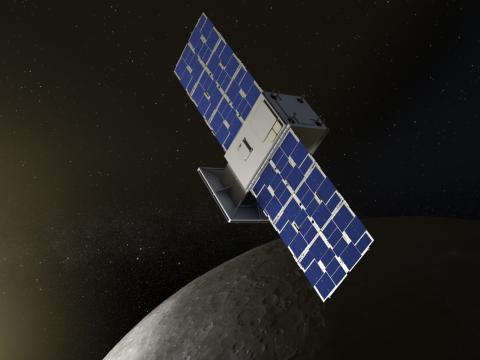
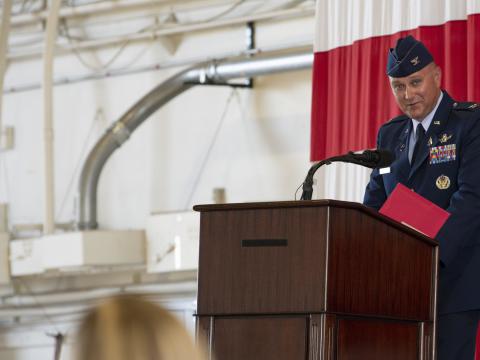

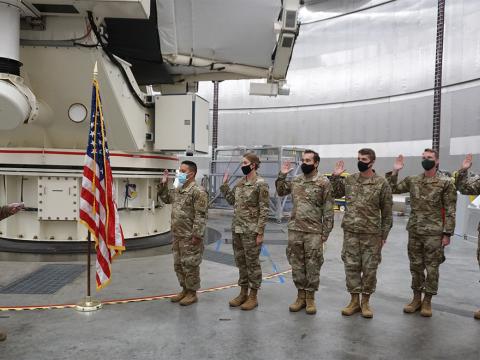
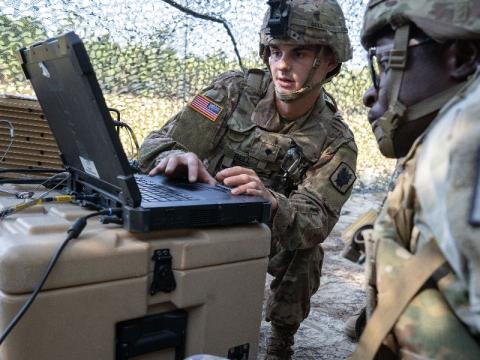
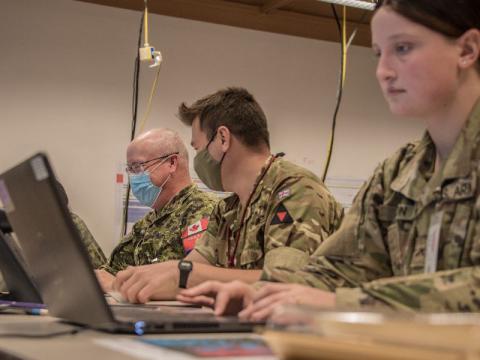
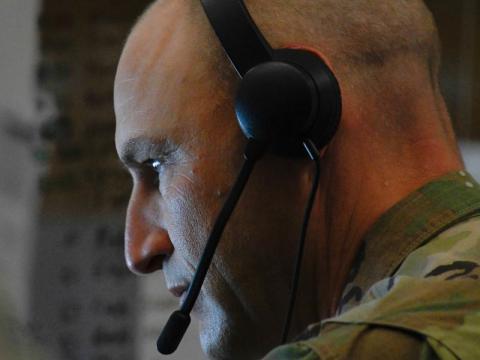
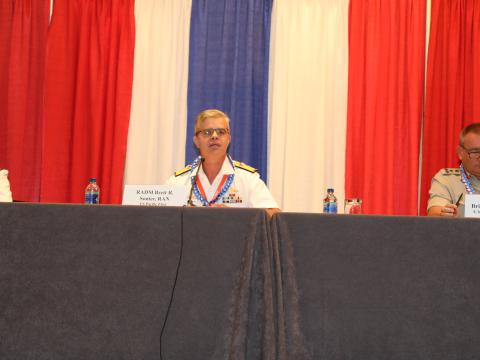

Comments